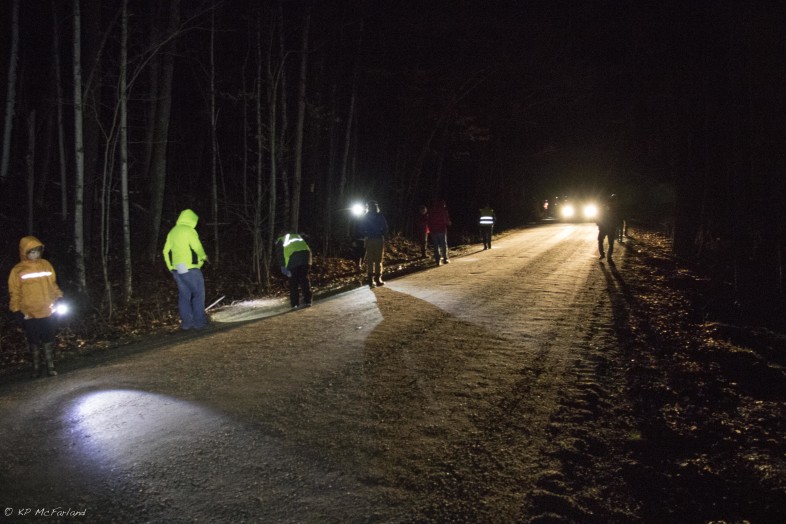
Volunteers count and shepard amphibians across a dirt road. /© K.P. McFarland
There are famous animal migrations – monarch butterflies to Mexico, songbirds to the Amazon, wildebeest in Tanzania, whales across oceans. What many people might not notice is the spectacle of migration that occurs here each spring on dark and stormy nights – amphibian migration.
This month on Outdoor Radio, we take you to Salisbury, Vermont where salamanders and frogs leave their underground winter home on rainy spring nights and migrate to nearby wetlands to reproduce. But along the way, they have to cross a small dirt road. These “salamander crossings” can become slaughter lanes. As a result, on nights during mass migrations, volunteers act as “crossing guards” so that amphibians can safely reach their vernal pools for breeding.
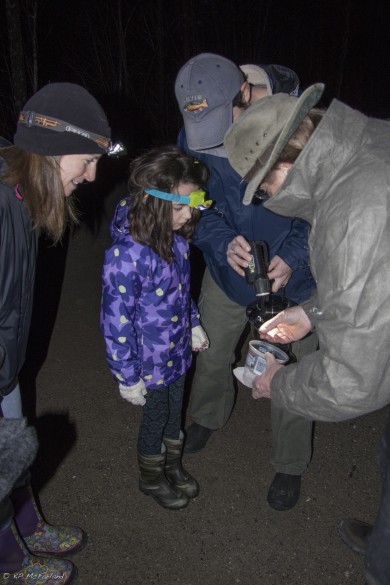
JIm Andrews shows volunteers some of the amphibians that are being transported across the road. / © K.P. McFarland
“It’s an early sign of life in the Spring. It’s a major wildlife spectacle that many people have overlooked,” said herpetologist and crossing leader Jim Andrews as he busily teaches kids and adults how to identify them and about their natural history and conservation.
This is the 13th spring that Otter Creek Audubon and the Salisbury Conservation Commission has patrolled the roadway. On this night, dozens of volunteers with clipboards and flashlights keep a tally of their numbers and gently scoop them up and move them to the other side of the road so they don’t get run over by passing cars. Its an annual rite of spring for both amphibians and enthusiastic volunteers.
On this night, volunteers found fewer amphibians compared to a big movement the prior week when hundreds of Blue-spotted salamanders migrated. We found primarily Eastern Red-backed and Four-toed Salamanders. Both species that move a bit later in the spring than the Blue-spotted. Most of the Wood Frogs had already moved to the breeding pools and could be heard calling in the distance. Only seven cars passed through the road during the evening, but despite the careful monitoring of the crossing guards, 14 amphibians were killed. But over the course of two and a half hours, volunteers helped nearly 500 amphibians get to the other side.
Amphibian Count During the Event
- Eastern Red-backed Salamander (181 alive, 3 dead)
- Four-toed Salamander (174 alive, 3 dead)
- Blue-spotted Salamander (116 alive, 5 dead)
- Spotted Salamander (10 alive, 2 dead)
- Spring Peeper (9 alive, 1 dead)
- Wood Frog (5 alive)Eastern Newt (3 alive)
Listen to the show
Report Your Amphibian Sightings
- Add your observations to iNaturalist Vermont, a project of the Vermont Atlas of Life. Each observation is shared with theVermont Reptile and Amphibian Atlas.
Learn More about amphibians and vernal pools
Images from the Show
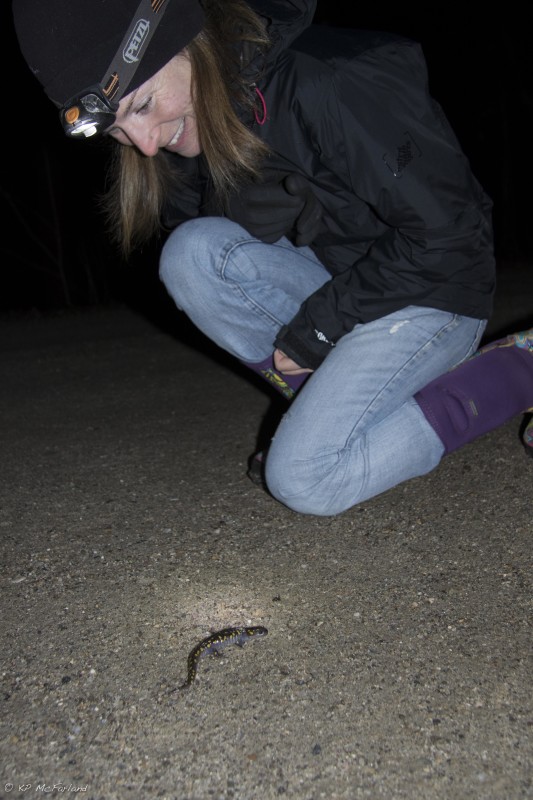
Sara Zahendra watches over a migrating Spotted Salamander as it makes its way across the road. /© K.P. McFarland
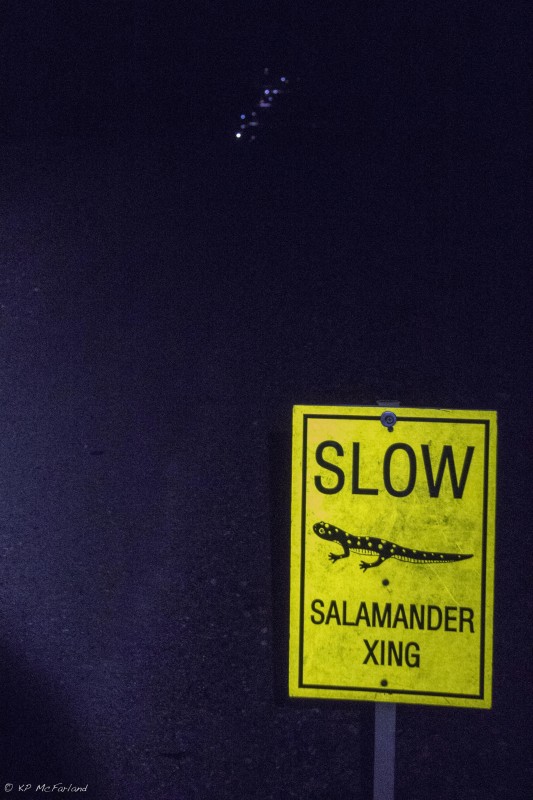
A temporary sign placed on the road to warn motorists of the migration. The dim flashlights of volunteers shine in the background like stars in the night. / © K.P. McFarland
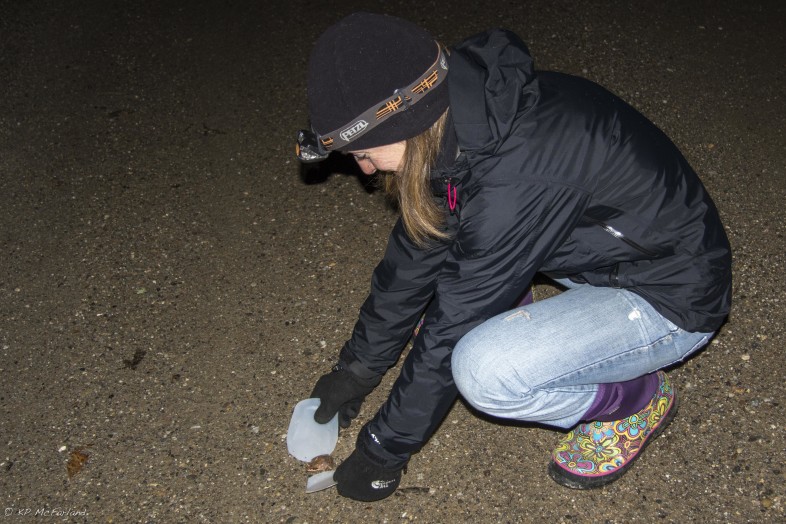
Sara scoops up a Wood Frog to carry it to the other side of the road. / © K.P. McFarland
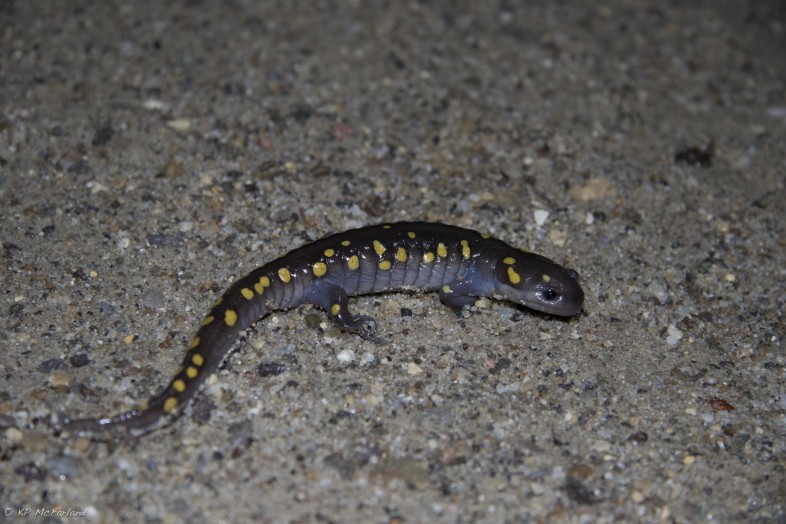
Spotted Salamander crossing the road. / © K.P. McFarland
Outdoor Radio is produced in collaboration with the Vermont Center For Ecostudies with support from the Windham Foundation. The program is recorded and produced by VPR’s Chief Production Engineer Chris Albertine.

Pingbacks (1)
[…] Listen to the show […]